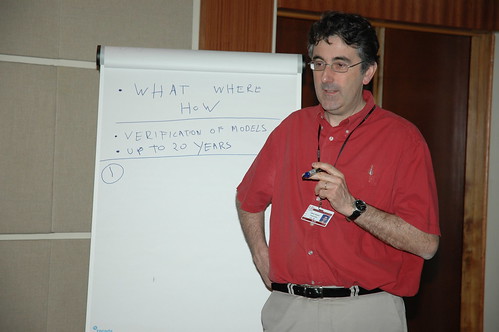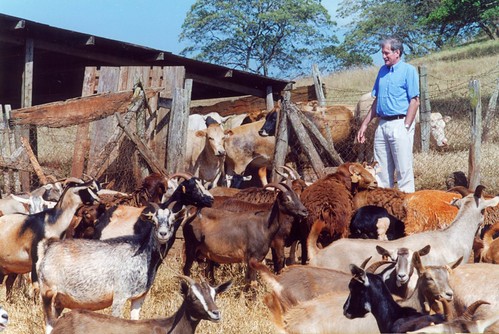We thought it appropriate in this United Nations ‘International Year of Biodiversity’ to highlight not only work by the International Livestock Research Institute (ILRI) and its partners (see ‘Livestock Diversity Needs Genebanks Too’, an opinion piece by ILRI Director General Carlos Seré published on the SciDevNet website on 21 May 2010) to conserve breeds and genes of native livestock that are rapidly disappearing, but also those of wild animals similarly threatened.
The Frozen Ark is such an initiative. It is led by Olivier Hanotte, an animal geneticist who spent many years at ILRI working to conserve livestock genetic resources indigenous in developing countries. These days Hanotte is running The Frozen Ark Consortium, a worldwide group of institutions coordinated from an office within a Frozen Ark Unit at the School of Biology at the University of Nottingham in the United Kingdom: Frozen.Ark@nottingham.ac.uk
The aim of the Frozen Ark is to preserve, for hundreds if not thousands of years, critical information about the species collected. As their website explains: ‘Despite the best efforts of conservationists, thousands of extinctions have occurred before the animals could be rescued. There has not been enough knowledge or money to stem the tide. This pattern is being repeated across all animal groups and emphasises the importance of collecting the DNA and cells of endangered animals before they go extinct. The loss of a species destroys the results of millions of years of evolution. If the cells and DNA are preserved, a very great deal of information about the species is saved. . . . For animals endangered but not yet extinct, the stored DNA and cells can also provide renewable resources of variation for revitalising captive breeding populations when the loss of variation through inbreeding threatens their survival.’
What has caught the public’s imagination is the possibility—a possibility ever more credible in light of ongoing, transformative, breakthroughs in molecular biology, particularly genetics and genomics, as well as drastic falls in the cost of sequencing genomes—that in future scientists will be able to reconstruct extinct animals from such preserved material.
‘While the reconstruction of extinct species from frozen material is not yet practicable, the possibility is not remote,’ says Hanotte. ‘If we fail to preserve the DNA and cells, the information and the possibilities will be lost forever. If DNA is stored in liquid nitrogen at -196 degrees Centigrade, it should survive intact for many hundreds, and possibly thousands, of years.’
The International Union of the Conservation of Nature (IUCN) Red List distinguishes more than 16,000 animal species that are under threat. The Fozen Ark aims eventually to collect the DNA of all these species, and the viable cells (somatic cells, eggs, embryos and sperm) of as many as possible, over the next 50 years. But Hanotte is quick to point out that the Frozen Ark Project is not a substitute for conserving the world’s diverse wildlife species, but is rather ‘a practical and timely backup of their genetic material.’
For more information, visit the Frozen Ark Website.
And watch the online version of this week’s broadcast (30 Mar 2010) of the American television program ’60 Minutes’, which explores the possibility of Resurrecting the Extinct from frozen samples.


